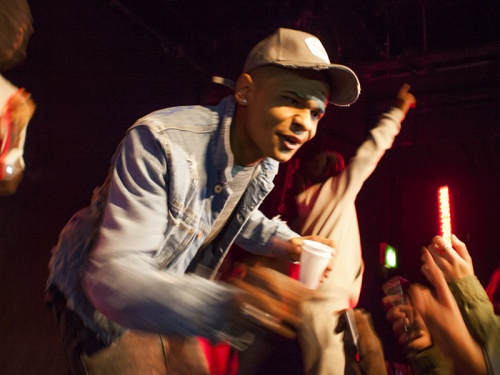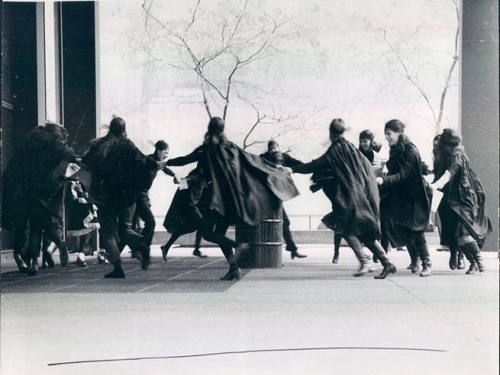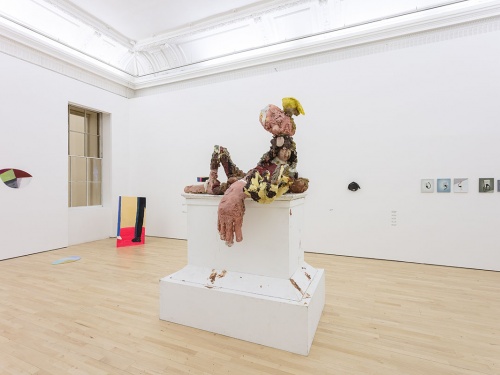TEXT2SPEECH: Reclaiming Art School
TEXT2SPEECH is a new series of reading groups organised by the ICA Student Forum to provide a space for debate around an eclectic range of texts, with each meeting topically responding to a part of the ICA’s current programme. The group is free to join and open to all, encouraging anyone with an interest in contemporary art and theory to join either regularly or for one of the meetings.
ICA Student Forum organiser Jane Scarth has written an engaging summary of the latest discussion.
Drawing on a text by Julie Ault and Martin Beck, Drawing Out & Leading Forth, this session highlighted the tensions between different methods of art school education. This is a hotly critiqued and complex field of enquiry, considering the fact that access to art schools is becoming increasingly restricted. To supplement Ault and Beck’s essay, the recently published article Is this the end of the British art school? offered a further perspective, drawing attention to the immediacy of the questions being asked.
Participants in the session provided various viewpoints; there were international voices, in addition to current students at both mainstream and alternative postgraduate programmes, in subjects such as Fine Art, Art History, and Film Studies. Using the text as a launching point to discuss personal experience and opinions, we branched out into a broad conversation around notions of individual versus collective, art school economics, professionalisation and pedagogical methods.
"While striving for independent thinking is in many ways productive and positive, in reality, artistic production is both a social process and a cultural practice, embedded into particular histories and contexts."
Ault and Beck make a point of contrasting the individual drive inherent in art practice to the collective experience of art school and the social responsibility associated with being an artist. This immediately led to a comparison of the old and new Central Saint Martins, a switchover that saw the historic buildings at Charing Cross, Holborn and Clerkenwell close, to be joined together in a new King’s Cross campus.
The university claimed that this new mega-school would allow for interdisciplinary, collective experience between courses and departments. In reality, students find themselves unable to access many areas of the building due to restrictive security policies, with the sheer size of the building undermining the community ethos that emerged from the smaller, run-down buildings scattered across London.
"Education is a commodity that costs money, sometimes a great deal of money, and is believed to translate into the potential to make a great deal of money."
Ultimately, schools such as Central Saint Martins are off limits to many aspiring artists due to the price of both fees and living. We discussed the alternatives to MA programmes, from going to free lectures and talks around London, to artist-initiated schools such as The School of the Damned. With two participants from Australia, we heard that mentorship schemes for recent graduates to work with mid-career artists are successful genuine alternatives to an MFA, equipping young artists with the tools they require for professional practice.
"An art school is a business whose products are professionalised artists who should practice their profession on a prominent stage."
Another fruitful discussion formed questions around the shift that has taken place within art schools. There is a romance surrounding their history as marginal institutions, places ideally suited to those otherwise excluded from further education. Now, they are not only inaccessible, but carry damagingly high expectations. They are places where you are no longer allowed to fail.
It was suggested that failure should be reclaimed as a purpose of the art school. The notion of a polished student emerging from a successful art institution is held as a false ideal. Yet this is the unfortunate result of the art school’s adoption of academic university systems. The student mutates from customer to product through the process of graduating, becoming the professional, employable subject at the end of their degree. As highlighted by Ault and Beck, this is most poignantly experienced in the constant rehearsal of the studio visit format for young artists studying at European and American universities.
Throughout the evening, we questioned whether creativity was something that emerged from necessity. While questions of economics formed much of the debate, we tried to interrogate what was successful about art schools and what made them unique. Concluding the discussion, we found hope in the idea that the opportunity for change lies in the cracks of the institution and in the balance of individual creativity and community awareness, where students can create their own rules within a flawed system. ■
Join us on Wednesday 1 April for our fifth meeting, where we will discuss a text by HG Masters: No Occupation Without Representation: Artists in Palestine (2011). The text looks at the practices of a number of contemporary Palestinian artists, whose work often produces responses to the Israeli occupation. As a secondary text, you may wish to read Rethinking National Archives in Colonial Countries and Zones of Conflict: The Israeli-Palestinian Conflict and Israel's National Photography Archives as a Case Study by Rona Sela (2014). Both texts consider how images and archives can be manipulated to construct narratives based on varying perspectives and political agendas.
This article is posted in: Articles, Blog, Student Forum
Tagged with: ICA Studentforum, learning, TEXT2SPEECH, Jane Scarth, bloomberg new contemporaries, Julie Ault, Martin Beck, Art School





